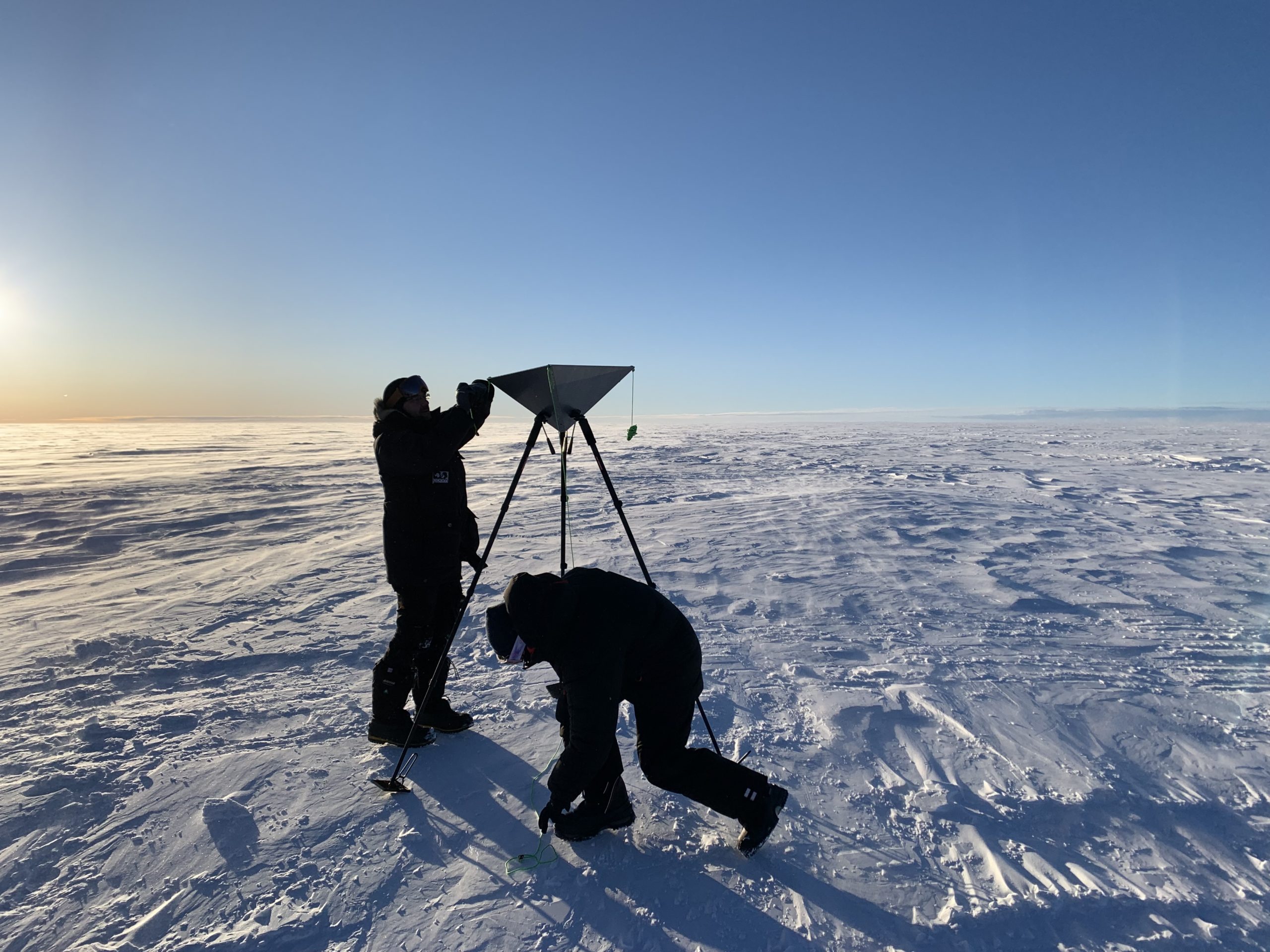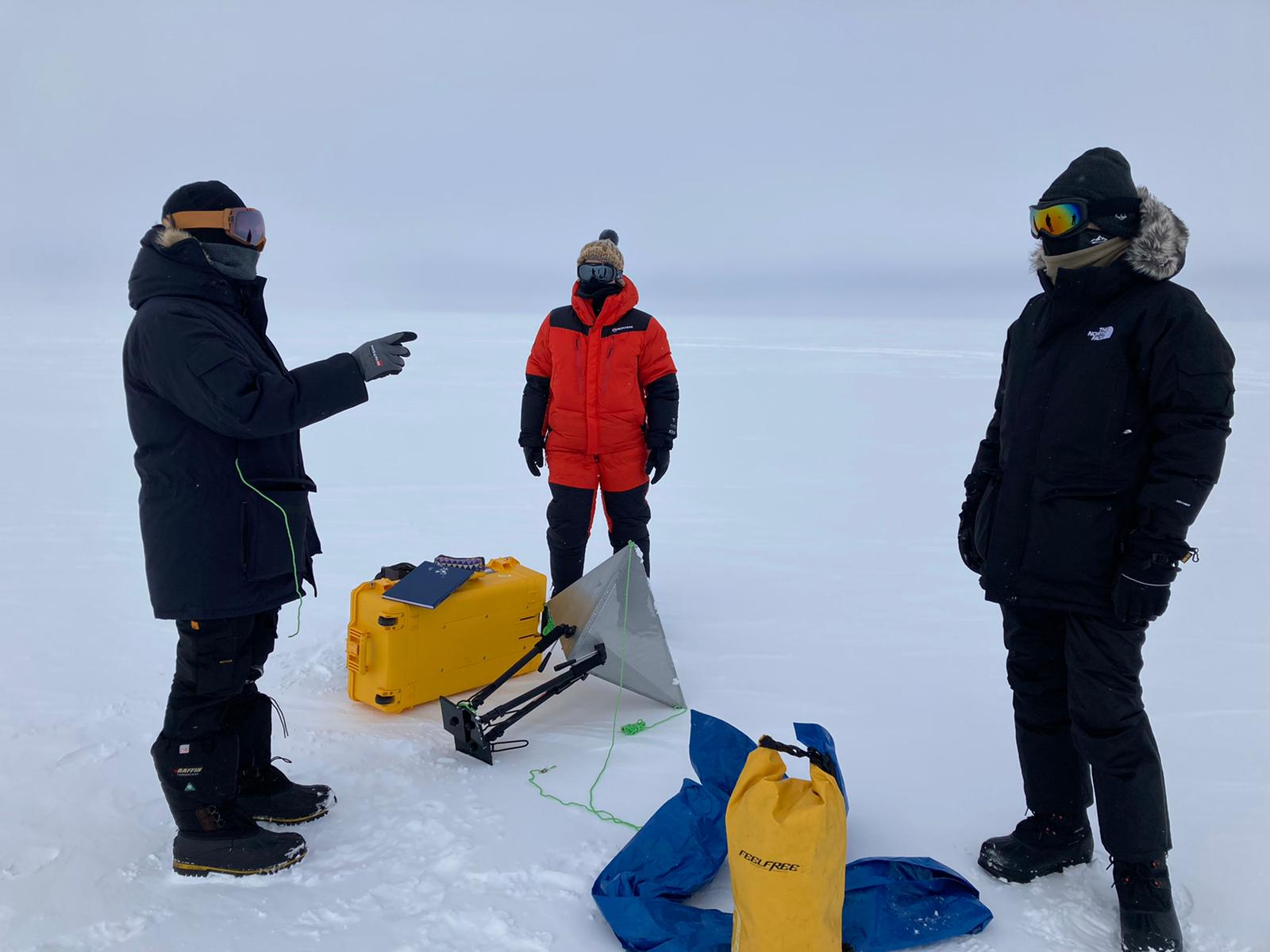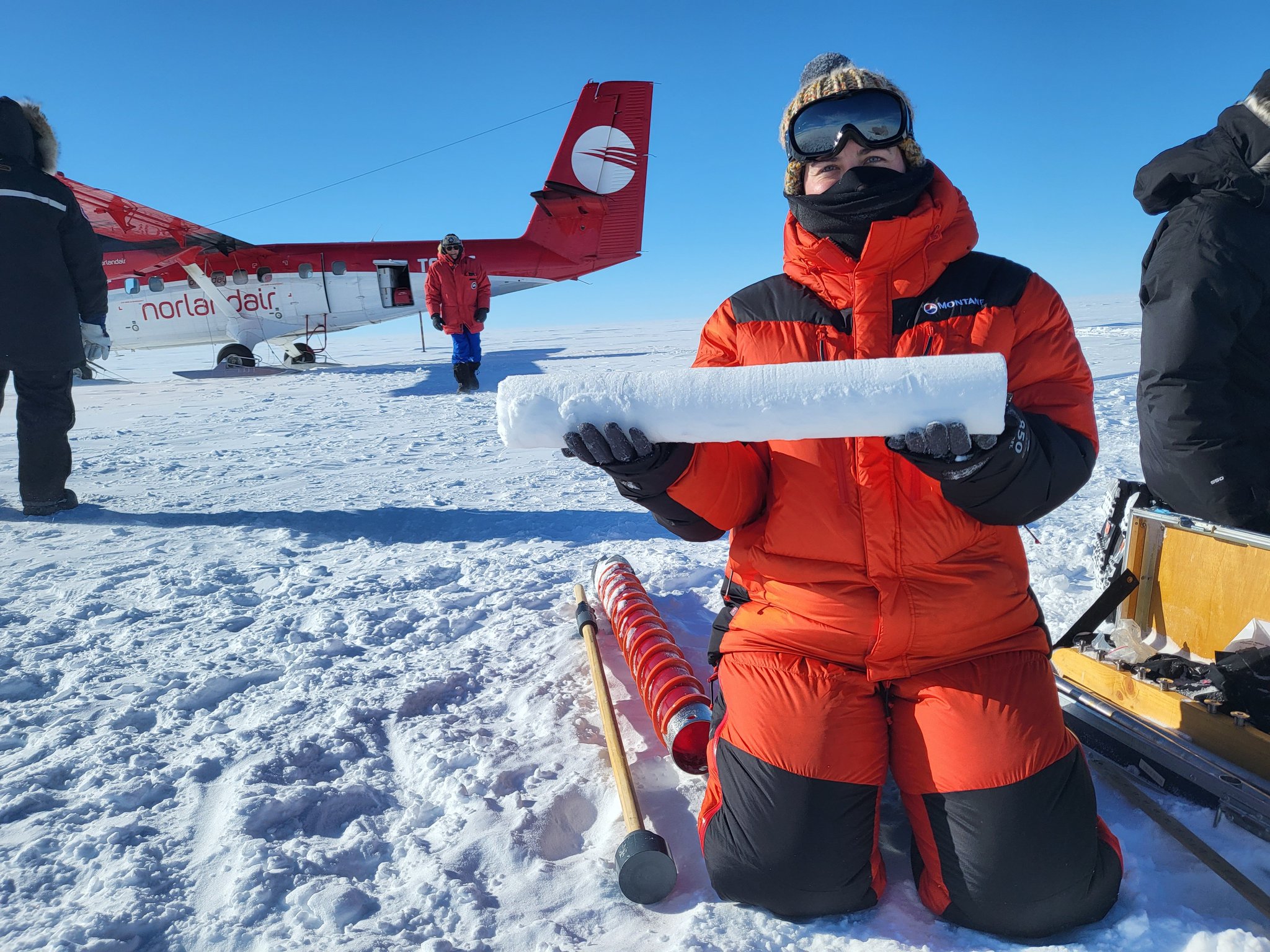The following blog was written by PhD researcher, Amy Swiggs based at the University of Leeds.
Andy Shepherd, Inès Otosaka, Anne Braakmann-Folgmann and I travelled to Greenland in Spring 2022 for the European Space Agency’s (ESA’s) CRYO2ICE campaign. The campaign is an international effort to cross-validate ice-monitoring satellites, including CryoSat-2, ICESat-2, AltiKA, and Sentinel-3. The campaign was coordinated across the EGIG line on the Greenland Ice Sheet.
We flew to Iceland on March 28th and had two days in Reykjavik to finalise the experiment plan and calibrate equipment, such as the magna probe, used for measuring snow depth, and practice assembling the corner reflectors, used as a strong scattering surface for the Technical University of Denmark’s (DTU’s) airborne LIDAR. Anne flew to Greenland to prepare for analysing the ice cores the rest of us would collect on the ice sheet. We then had a five-hour drive through Iceland to Akureyri, where we had equipment stored, and would be boarding our Norlandair twin otter flight to Greenland the following day.
Bad weather in Ilulissat meant our plans changed, but fortunately Andy and Inès were able to collect an ice core on the EGIG line, before we all spent the night in Sisimiut, west Greenland. When the weather improved, we coordinated with the team at DTU to organise an overpass of their LIDAR over our corner reflectors on the EGIG line. We also collected snow depth measurements with the magna probe and weighed snow for snow density calculations. We did this at two sites on the EGIG line, with DTU spotting our corner reflectors at both sites.
The following day, we were on the ice again, collecting an ice core for analysis. The weather was sunny, but temperatures reached -30˚C on the ice during the campaign. We returned to Ilulissat and analysed the ice cores with Anne, which involved using fluorescent light to look for ice lenses and other distinguishable features in the cores. The following day we had a long flight back to Reykjavik, but fortunately had stunning views over the ice sheet throughout.
That marked the end of a very successful campaign. Steven George, University of Reading, provided invaluable support during the campaign, assisting with measurements and logistics. The airborne and coordination team at DTU included Rene Forsberg, Louise Sandberg Sørensen, Henriette Skourup, Renée Fredensborg Hansen, and Sine Hvidegaard. Alessandro Di Bella (ESA) also assisted in the airborne campaign. We’re grateful to the fantastic team effort in coordinating a highly successful campaign.






